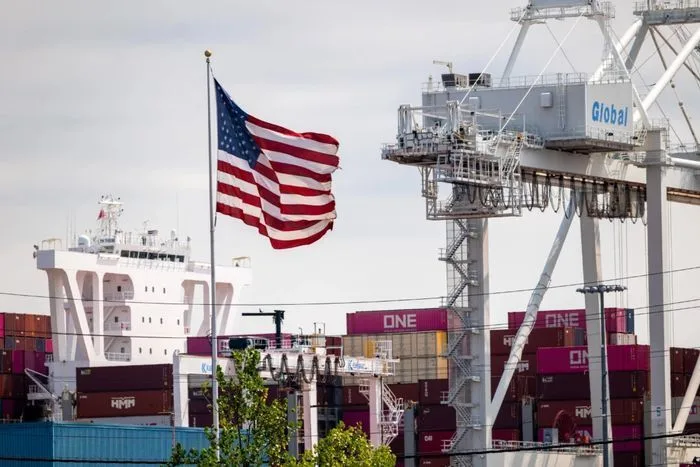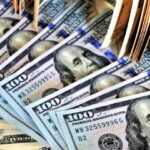By Tom Ozimek
The U.S. goods trade deficit widened sharply in July as imports of oil and industrial supplies soared, signaling firm domestic demand in an economy where manufacturers and consumers appear to be drawing heavily on fuel, chemicals, and raw materials to keep activity humming.
The trade gap in goods jumped 22 percent to $103.6 billion from $84.9 billion in June, the Commerce Department reported on Aug. 29. Economists polled by Reuters had expected the deficit to reach $89.5 billion, making the blowout a major upside surprise.
Imports of industrial supplies—including petroleum—rose more than 25 percent, while capital goods climbed 4.8 percent, consumer goods 2.1 percent, and “other goods,” a catch-all category, 11.5 percent. Exports were little changed.
Part of the import surge may reflect robust domestic demand. Some could also be due to stockpiling ahead of President Donald Trump’s early August deadline for new country-specific tariffs, a pattern seen in previous months as importers front-ran expected duties. A similar rush helped drive the overall U.S. trade gap, including services, to a record $140.5 billion in March.
The import surge aligns with recent signs of economic resilience. U.S. manufacturing activity hit a 39-month high in August on stronger domestic and export orders. Consumer spending, which accounts for more than two-thirds of economic activity, increased 0.5 percent in July, the biggest gain in four months, after a 0.4 percent rise in June.
Motor vehicle purchases led the advance, lifting durable goods outlays by 1.9 percent, with additional gains in recreational goods, clothing, furnishings, and household equipment. Some categories softened, however. Spending at restaurants and bars as well as on hotels fell, reflecting what some analysts say is greater consumer caution.
“A consumer that is cutting back on going out to eat and not booking as many hotel stays may not signal disaster, but it does point to the sort of budgeting decisions that households make when under pressure,” said Tim Quinlan, a senior economist at Wells Fargo.
Inflationary pressures also remain a concern. Core personal consumption expenditures (PCE), the Federal Reserve’s preferred inflation measure, accelerated to 2.9 percent in July, marking the fourth straight month of gains. Headline PCE inflation held steady at 2.6 percent last month, also higher than the Fed’s 2 percent target.
“The data supports a picture of the U.S. economy that is moving in a more stagflationary direction, albeit slowly,” said Preston Caldwell, chief U.S. economist at Morningstar. “This presents somewhat of a quandary for the Fed, but we expect them to proceed with two rate cuts this year, given that expectations of rate cuts have been baked into the market for some time, and because of worrying data recently in the labor market.”
There have been signs of labor market cooling in recent months. The Labor Department recently reported that payrolls rose by 73,000 in July, short of the roughly 115,000 forecast. What’s more concerning, however, is that May’s gain was cut to 19,000 from 144,000, while June’s was reduced to 14,000 from 147,000. The 258,000 downward revision drags the three-month average to 35,000, pointing to a loss of hiring momentum.
Meanwhile, the broader economy expanded at a 3.3 percent annualized pace in the second quarter, the Commerce Department said Aug. 28. The growth rate was revised up from an initial estimate of 3.0 percent and exceeded expectations. Consumer spending was revised higher to 1.6 percent from 1.4 percent, while business investment also came in firmer, offsetting weaker government spending.
A key gauge of private demand—real final sales to domestic purchasers—was revised up to 1.9 percent from 1.2 percent, underscoring robust household and business activity.
Reuters contributed to this report.





